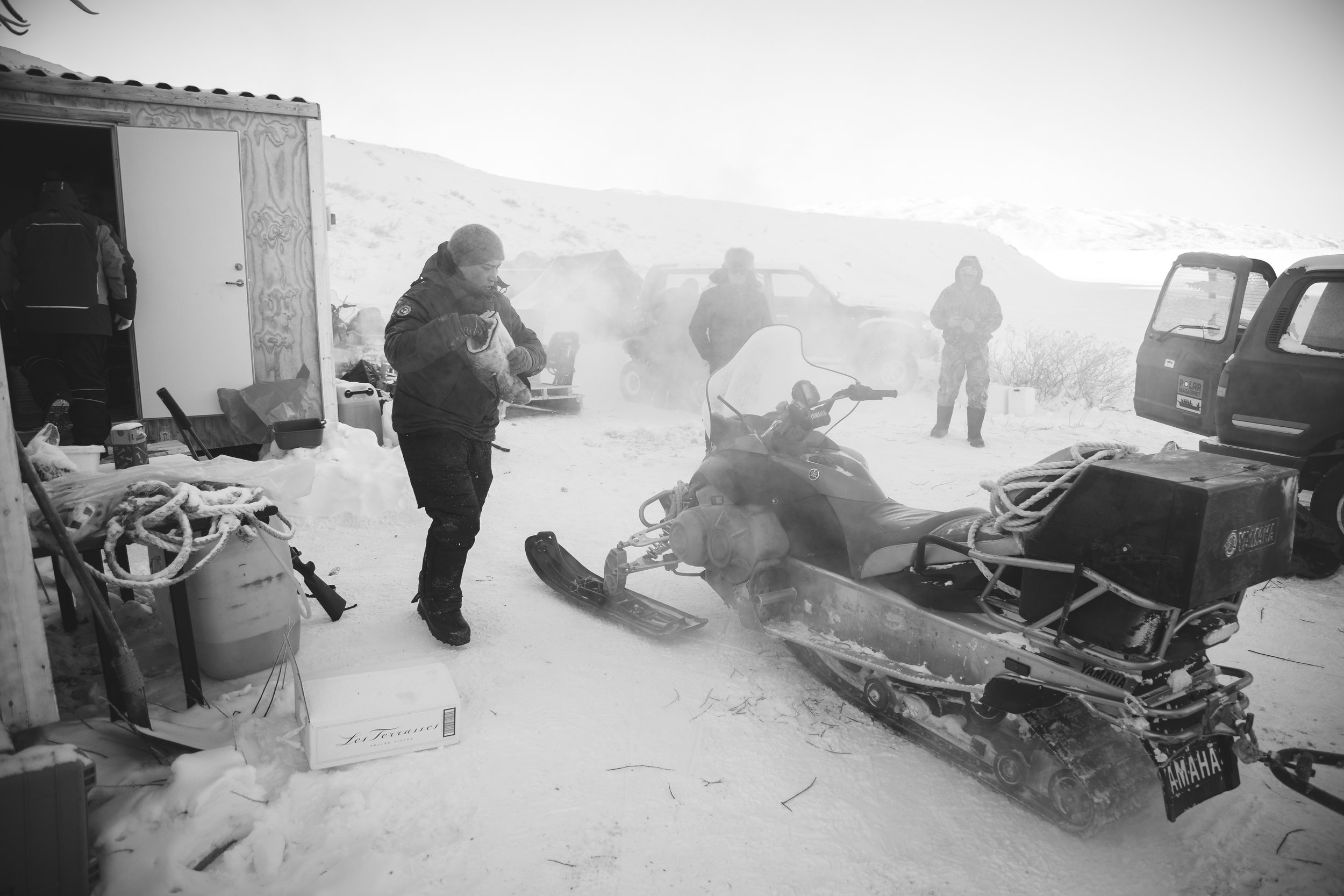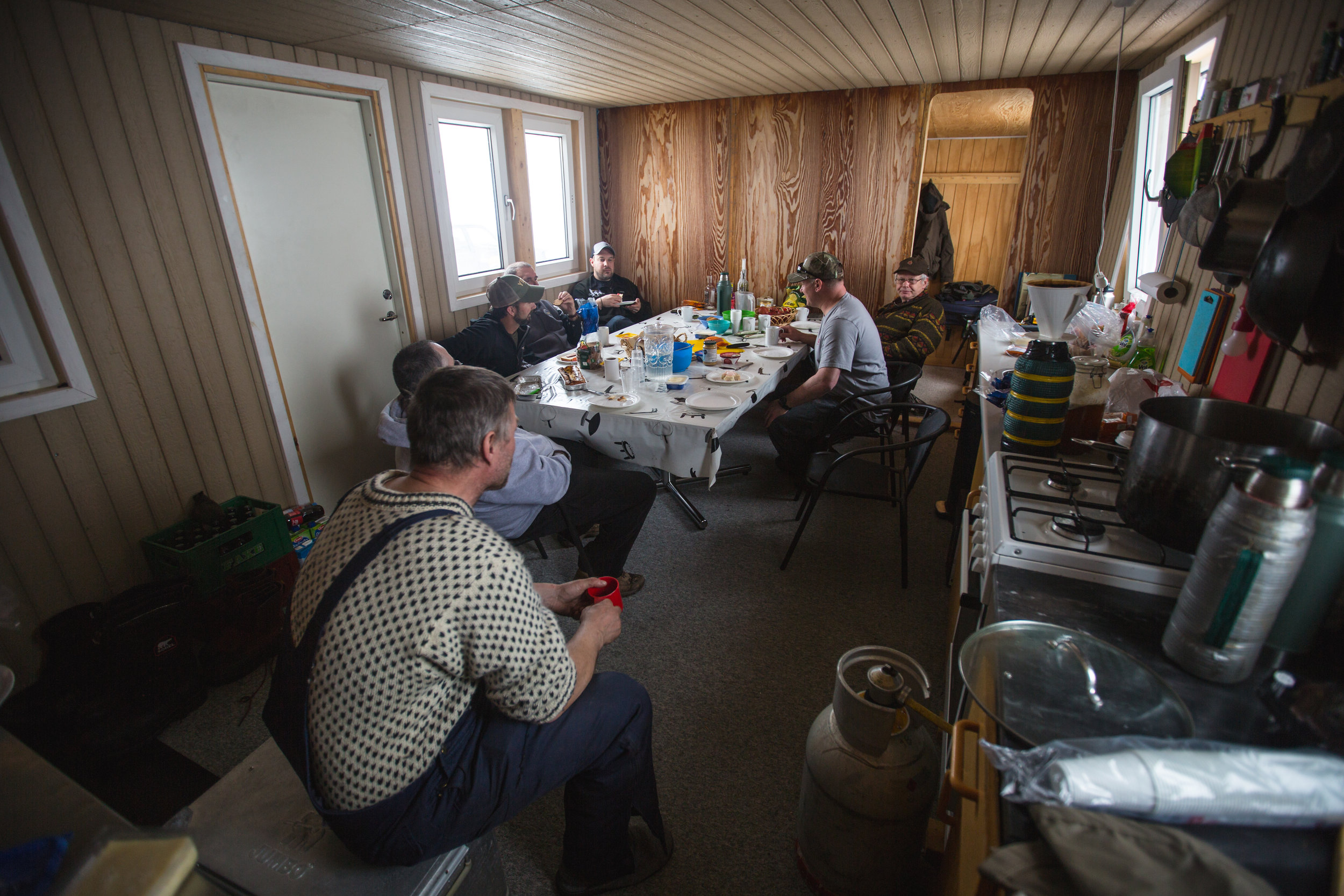The Silence of the Arctic
The -22-degree air bit into my face like miniature daggers. It seemed to creep and crawl around the edges of my baklava and goggles, eating away at my exposed flesh. Our transportation was a mix of modern-day technology and tradition: an Inuit sled pulled by a grumbling snowmobile. We eased along an ice-packed ridgeline, the hum of the snow-machine ringing in my ears. We’d gone several miles before my guide brought the sled to a stop and extinguished the engine. As I raised my binoculars to scan the distant horizon, the ticking of the engine faded, and for the first time in my life, I understood what true silence was. The quiet understood what true silence was. The quiet was haunting. The actual absence of sound made my ears ache, and I strained to hear something … anything. But I couldn’t. No birds, no crickets, no rustle of vegetation or any other ambient noise I associate with wild places. As I glassed the ice-crusted cliff faces for the shaggy-haired prehistoric monarch of the north, my mind drifted to the planet Hoth. You know, the one from the legendary movie Star Wars: The Empire Strikes Back. That scene where Han Solo uses the heat of a gutted tauntaun to help Luke Skywalker survive the unforgiving elements. I could only hope my archery tackle and layered clothing would prevent me from having to go to such extremes on this sure-to-be amazing Arctic adventure.
The two-hour drive to our base camp over the thick ice that covered the ocean transported us back in time to the Pleistocene era. We expected to see woolly mammoth, not musk ox.
The base camp cabin was simple. A small main dining and cooking area featuring a single kerosene stove took up most of the space. It was flanked by two small rooms on either side that held four sets of bunk beds. The close quarters enhanced the feeling of camaraderie. The outfitter, who also wore the hat of the camp cook, and our guides belonged in a class of outdoorsmen I've never encountered. While we stayed warm in our heated plywood cabin, they slept outside on simple cots in what appeared to be old army tents.
Our mode of transportation on the 90-minute journey toward the ice cap and the musk ox-speckled mountains was a snowmobile pulling an Inuit sled tethered together with twine. The cord that bound our wooden chariot allowed enough flex in the structure that even in the extreme cold (temperatures that ranged from 5 degrees to -30 degrees Fahrenheit) the sled could handle the shock of movement as we traversed the countless rocks, snow and ice of this Arctic terrain. I can only compare this method of travel to being in a car wreck over and over again. At least that is how it felt on our bodies.
I was blown away by the drastic elevation changes in this vast frozen wilderness. My initial assumption, perhaps affected by past musk ox hunts I'd watched on TV, of finding musk oxen in the low rolling hills around frozen rivers and lakebeds was shattered. We glassed groups of musk oxen feeding in the saddles and rocky basins hundreds of feet above us, the massive beasts foraging through the snow. These animals truly lived up to their genetic heritage, being more closely related to mountain goats than traditional oxen. Terrain, along with a custom musk ox decoy made by Montana Decoy, was our primary strategy for closing the distance on these incredibly skittish yet majestic creatures.
Bowhunting musk ox in the Arctic Circle in Greenland is an achievable extreme adventure. From the frigid conditions to the unbelievably rugged and rocky landscape, the memory of this hunt is forever burned into my mind, as is the slight frostbite I received on my left thumb. There were breathtaking, star-studded night skies painted with the vivid shades of green, purple and yellow of the Aurora Borealis and the incredible adrenaline of stalking musk ox on the barren icy ridges. But most of all, there was the silence of the Arctic, which screamed at my soul and reminded me that we were mere visitors in a harsh landscape. I came to understand that bad decisions made under such conditions could be life threatening, and came to realize how important it was to be able to depend on your gear and guide to accomplish such a lofty goal as harvesting a musk ox with a bow in the Arctic Circle.
SEE THE FILM: We are excited to announce the premiere of the digital short film The Silence of the Arctic, dropping in late August. Join Trevon Stoltzfus and Dustin Etheredge of Outback Outdoors on this cinematic Arctic adventure of harvesting a musk ox in the shadows of the polar ice caps of Greenland. Be sure to check back this summer with Grand View Media and Outback Outdoors on Facebook and lnstagram for the announcement of the premiere date.
Special Thanks: The logistics for this hunt were daunting, and the author was thankful to have Outdoor Adventure Specialists' Chris Muller along on the hunt. Chris helped manage and overcome a myriad of obstacle regarding travel, lodging and all other details on such an adventure. Contact Chris Muller at 215-290-2099 or visit www. oashunts.com.











